Now that summer is definitely upon us (definitely here this time around–it’s baking hot out there!), it’s time once again for the Free-For-All to share with you some of our lovely staff’s selections for summer reading!

We are a staff of diverse reading/listening/viewing habits, which makes these posts so much fun. There is such a wide range of books and media that our staff enjoy that there is bound to be something in here to help make your summer that much more entertaining! And so, without further ado, here is our fifth round of Staff Selections:
From the Reference Desk:
Advise and Consent by Allen Drury
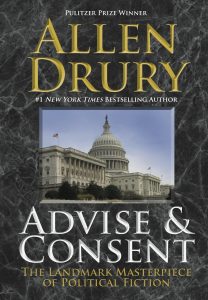
Russian spies, government corruption, and collusion in the United States government? It’s not CNN. It’s Allen Drury’s seminal 1959 Cold War novel. The intrigue swarms around the confirmation of prominent liberal political Robert Leffingwell to the position of Secretary of State…a man who is backed by the Communist Party. Though the nomination is supposed to be a quick, sure-fire thing, several politicians have grave doubts about Leffingwell’s character, leading to a race-aginst-time investigation. Advise and Consent was the first in a series that continues these themes of Cold War intrigue, and are sure to grip your attention!
From the Children’s Room
Dangerous Angels by Francesca Lia Block

The Weetzie Bat books broke new ground with their stylized, lyrical prose and unflinching look at the inner life of teens. This collection brings together the five luminous novels of the series, allowing readers to revel in the full saga of these interwoven and magic lives. These postmodern fairy tales take us to a Los Angeles brimming with magical realism: a place where life is a mystery, pain can lead to poetry, strangers become intertwined souls, and everyone is searching for the most beautiful and dangerous angel of all: love. Block’s quirky, lush descriptions make this story into something utterly divine.
Wicked Plants by Amy Stewart
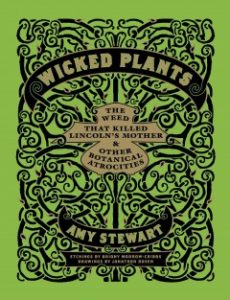
In this darkly fascinating book, Amy Stewart takes on over two hundred of Mother Nature’s most appalling creations, compiling an A to Z of plants that kill, maim, intoxicate, and otherwise offend. You’ll learn which plants to avoid (like exploding shrubs), which plants make themselves exceedingly unwelcome (like the vine that ate the South), and which ones have been killing for centuries (like the weed that killed Abraham Lincoln’s mother). Menacing botanical illustrations and splendidly ghastly drawings create a fascinating portrait of the evildoers that may be lurking in your own backyard. This is a book that will enchant (and chill) nature lovers, scientists, and gardeners alike!
From the Upstairs Offices:
Pride and Prejudice by Jane Austen
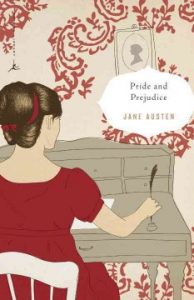
It’s the 200th anniversary of Jane Austen’s death, and there is a lot of discussion swirling about her works, their meaning, and Austen’s place in the world of letters. So why not take this opportunity to enjoy (or enjoy again) one of her most beloved novels–one of the most popular novels in English literature and the foundation of some of the most beloved tropes in romance? This book is a favorite with a number of our staff, so let their combined wisdom be your guide!


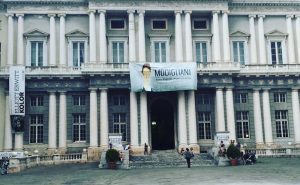
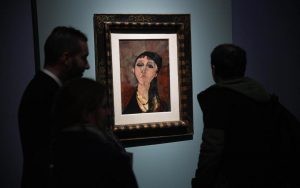
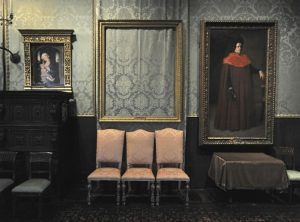 It seems like the stuff of fiction–and yet the repercussions of art crime are international and unforgettable. If you’ve ever been to the Isabella Stuart Gardener Museum, and looked at the empty frames that still hang on the wall in memory of the (still missing) paintings that were cut out of them, you know what a palpable loss those pieces still have (see image to left, via the New York Post). For those who have lost, or found, pieces stolen by Nazi authorities or during the Stalinist purgers, the enormity of the crime committed cannot be contained in a frame. Art speaks to us in a way that words and deeds cannot, and to rob someone of that is to rob them of their humanity. It also robs humanity of some truly staggering works of genius as well–the number of pieces that now have dubious provenance (the official history of a painting that traces its whereabouts throughout its life) is enormous, and is ever-growing.
It seems like the stuff of fiction–and yet the repercussions of art crime are international and unforgettable. If you’ve ever been to the Isabella Stuart Gardener Museum, and looked at the empty frames that still hang on the wall in memory of the (still missing) paintings that were cut out of them, you know what a palpable loss those pieces still have (see image to left, via the New York Post). For those who have lost, or found, pieces stolen by Nazi authorities or during the Stalinist purgers, the enormity of the crime committed cannot be contained in a frame. Art speaks to us in a way that words and deeds cannot, and to rob someone of that is to rob them of their humanity. It also robs humanity of some truly staggering works of genius as well–the number of pieces that now have dubious provenance (the official history of a painting that traces its whereabouts throughout its life) is enormous, and is ever-growing.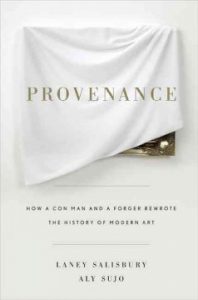 Provenance
Provenance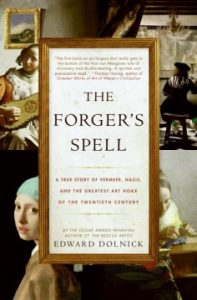
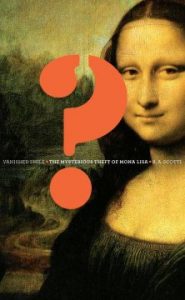
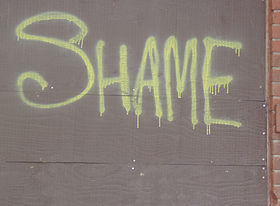
 That a list would run such an enormous gamut without comment or critique was in itself…odd to me. A lot of the books there were ones I had read in history and literature classes in college (T
That a list would run such an enormous gamut without comment or critique was in itself…odd to me. A lot of the books there were ones I had read in history and literature classes in college (T

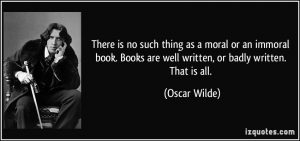
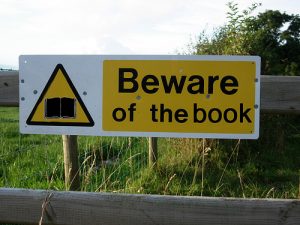
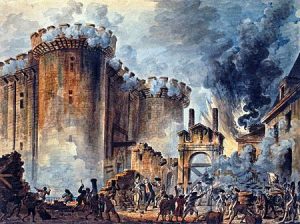
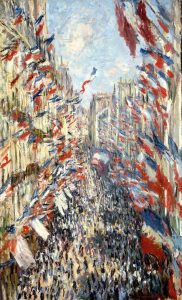
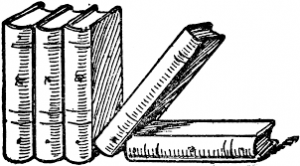
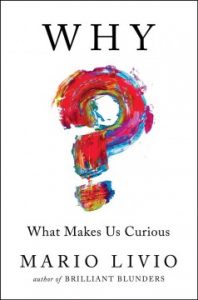
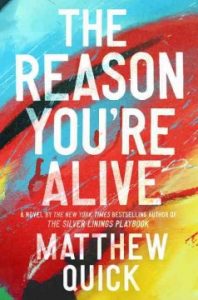
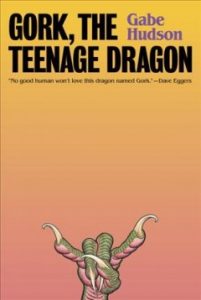
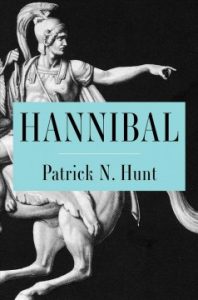
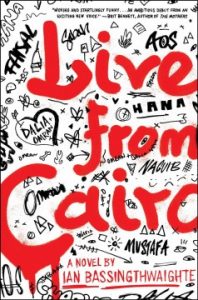
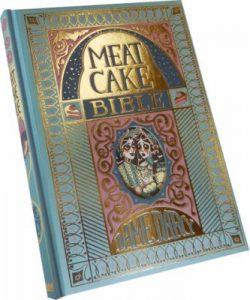
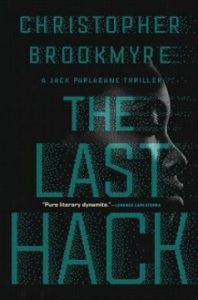
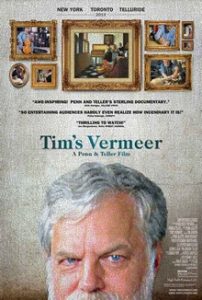

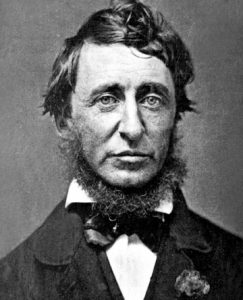

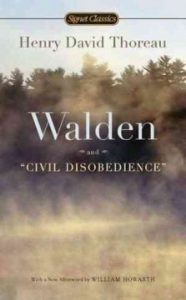
 When he was living at Walden, Thoreau brought his laundry home to his mother. He had dinner with his friends in Concord, most especially Ralph Waldo Emerson, not only because he wasn’t really big on cooking, but because he enjoyed the company. He invited Louisa May Alcott and her sisters to Walden Pond, gave them lessons on nature, and told them fairy stories about the creatures that lived under the ferns around his house. He planted a garden for Nathaniel Hawthorne as a wedding present, not only because wedding presents were expensive, but because he wanted to give Hawthorne a place where he could think freely (check out a photo of Thoreau’s garden from this photo, courtesy of the Trustees of Reservations). And, according to Hawthorne, Thoreau had a really good sense of humor.
When he was living at Walden, Thoreau brought his laundry home to his mother. He had dinner with his friends in Concord, most especially Ralph Waldo Emerson, not only because he wasn’t really big on cooking, but because he enjoyed the company. He invited Louisa May Alcott and her sisters to Walden Pond, gave them lessons on nature, and told them fairy stories about the creatures that lived under the ferns around his house. He planted a garden for Nathaniel Hawthorne as a wedding present, not only because wedding presents were expensive, but because he wanted to give Hawthorne a place where he could think freely (check out a photo of Thoreau’s garden from this photo, courtesy of the Trustees of Reservations). And, according to Hawthorne, Thoreau had a really good sense of humor.
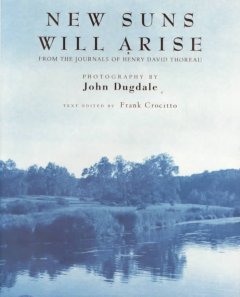 Now, it is very, very true that Thoreau was in a unique and privileged position. He had friends who were willing to support him , he didn’t have dependents who needed his labor or financial support. He was provided an education (at Harvard, no less). Ultimately, he had time, and used it to create the space he needed to live the life he wanted. Few of us today are in a position, financial, familial, or otherwise, to do what Thoreau did. But that doesn’t mean that his choices are impossible to emulate. For all the awful going on around us, there is still beauty around us, and, like Thoreau, we deserve to enjoy it, and the people who make us better and happy, as well.
Now, it is very, very true that Thoreau was in a unique and privileged position. He had friends who were willing to support him , he didn’t have dependents who needed his labor or financial support. He was provided an education (at Harvard, no less). Ultimately, he had time, and used it to create the space he needed to live the life he wanted. Few of us today are in a position, financial, familial, or otherwise, to do what Thoreau did. But that doesn’t mean that his choices are impossible to emulate. For all the awful going on around us, there is still beauty around us, and, like Thoreau, we deserve to enjoy it, and the people who make us better and happy, as well.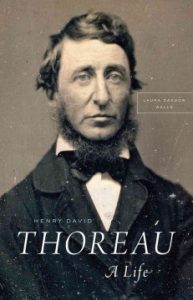
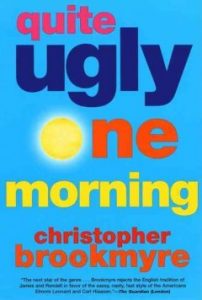 For those who haven’t discovered this delightfully smart, insightful, and occasionally, startlingly visceral series, the main character is a journalist named Jack Parlabane, who makes his career by taking on the stories that one else even believes exists, and gets his scoops by breaking in, snooping, and hacking the most seemingly impossible places. And while all these hijinx are exciting, and some of the situations are wildly, almost absurdly outlandish, what I love is that Christopher Brookmyre makes all his characters real, and flawed (sometimes appallingly so), and, generally lovable (this usually doesn’t extend to his villains, who can be pretty appalling, in the best of ways.
For those who haven’t discovered this delightfully smart, insightful, and occasionally, startlingly visceral series, the main character is a journalist named Jack Parlabane, who makes his career by taking on the stories that one else even believes exists, and gets his scoops by breaking in, snooping, and hacking the most seemingly impossible places. And while all these hijinx are exciting, and some of the situations are wildly, almost absurdly outlandish, what I love is that Christopher Brookmyre makes all his characters real, and flawed (sometimes appallingly so), and, generally lovable (this usually doesn’t extend to his villains, who can be pretty appalling, in the best of ways.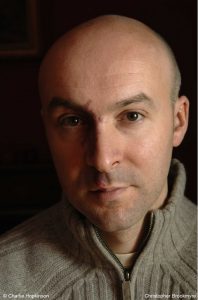
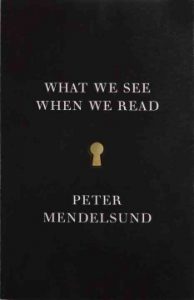 There have been some fascinating pieces written about the way we imagined literary characters. One of my favorites is
There have been some fascinating pieces written about the way we imagined literary characters. One of my favorites is 
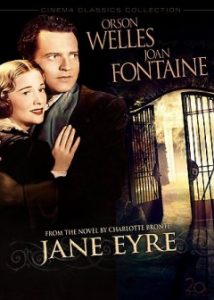 And what about the characters for whom we don’t have a good understanding? I’ll be honest, I couldn’t really describe what Rochester looks like. He is one of my favorite characters, I’ve read him countless times, I know his soul; but I couldn’t really describe his looks to you well enough that you would recognize him on the street. I’ve watched a whole slew of adaptations of Jane Eyre, and seen Rochester portrayed by everyone from
And what about the characters for whom we don’t have a good understanding? I’ll be honest, I couldn’t really describe what Rochester looks like. He is one of my favorite characters, I’ve read him countless times, I know his soul; but I couldn’t really describe his looks to you well enough that you would recognize him on the street. I’ve watched a whole slew of adaptations of Jane Eyre, and seen Rochester portrayed by everyone from